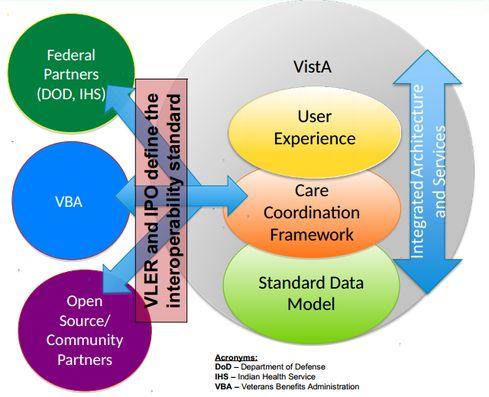VistA Core modernization and modularization will prepare the Veterans Administration's electronic health records system for the future.


5 Online Tools Uncle Sam Wants You To Use
5 Online Tools Uncle Sam Wants You To Use (Click image for larger view and slideshow.)
The core of the Veterans Administration's VistA electronic health records system will be broken down and rebuilt by ASM Research, part of Accenture Federal Services, under a two-year, $162 million contract.
Specifically, ASM will work with VA personnel to modernize the EHR known as the Veterans Health Information Systems and Technology Architecture (VistA) Clinical Application and Enterprise Core Services. VistA is the VA's pioneering EHR and, as government open source, the basis for several derivative software packages. ASM also will update VistA's Computerized Patient Record System (CPRS), providing modern, Web-based access to patient records.
Jim Traficant, president of ASM Research and a managing director at Accenture Federal Services, says ASM actually won the contract in September but wasn't allowed to publicize it immediately. That restriction has been lifted now that ASM has successfully navigated the first phases of the product. September is also when Accenture completed its acquisition of ASM.
[Is digitizing healthcare creating more problems than it solves? Read Electronic Health Records: First, Do No Harm?]
Although Accenture didn't publicize the contract win before now, the award was reported in November by Nextgov, which raised questions about whether the government had overpaid for the contract. That article described the project as a user interface overhaul. Traficant calls it a more basic refactoring of the system.
The VistA Core contract is part of a broader VistA Evolution initiative to modernize the system between now and 2017, he says. That will include certifying the system to the same Meaningful Use standards as commercial EHRs and standardizing the data architecture across VistA and related VA systems to support better analytics and other new applications. Work on VistA enhancements will proceed in parallel to the core redesign.
"Modernization is required because the technology is just so old," he says. VistA gets more love from doctors than most commercial EHRs, but the software architecture dates to the 1980s, and most of the major components of the system were well established by the 1990s. "Clinical functions, and even financial functions, are tightly integrated into a monolithic single system," he says. While that has supported better integration of patient records than exists outside of the VA, where sharing patient data between hospitals and healthcare providers is still challenging, the monolithic software architecture makes it difficult to plug in new functionality, he says. "It means you can't easily replace any one component or modernize any one aspect of it."
The VistA Core project goal is to modernize and modularize the core functions, without compromising the integrity of the system. "We want to maintain the richness -- we don't want to make it more difficult for people to practice medicine," Traficant says. He promises an iterative approach, closely matching new functionality that is delivered to the VA's requirements, particularly its clinical requirements.
The contract does not cover business functions such as appointment scheduling, currently getting scrutiny as part of the VA's wait-list scandal.
Medical data breaches seem to show up on the 6 o'clock news almost every week. If you think it wouldn't happen to you -- or the financial impact will be minor -- think again. Download the Healthcare Data Breaches Cost More Than You Think report today. (Free registration required.)
About the Author(s)
You May Also Like







